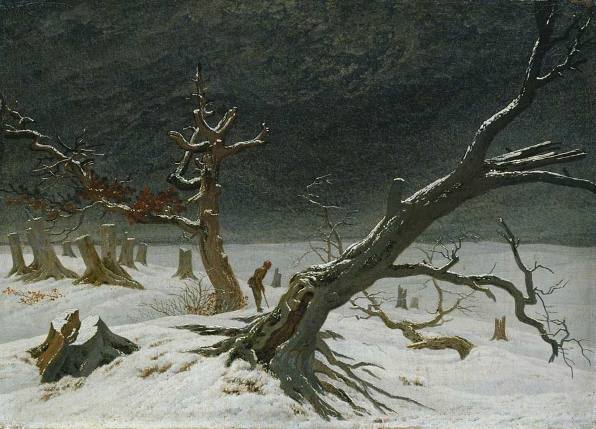
A long winter plagued the planet in 536. The period of 18 months, which the New Scientist dubbed “the year of darkness,” saw record low temperatures and a thick fog that prevented the sun’s rays from reaching the planet for 24 hours a day. Over the course of the next ten years, this climate catastrophe had an impact on areas of Asia, the Middle East, and Europe. Indeed, “the course of history may have been profoundly altered by this climatic downturn.” However, what set off this global warming catastrophe?
Historical Writings’ Allusions to a Worldwide Catastrophe
The medieval historian Michael McCormick was quoted in Science back in 2018 as saying that 536 “was the beginning of one of the worst periods to be alive, if not the worst year.” The sixth-century historian and church leader John of Ephesus reported in his historical work Historiae Ecclesiasticae, which translates as “Church Histories,” that “the sun became dark and its darkness lasted for 18 months.”
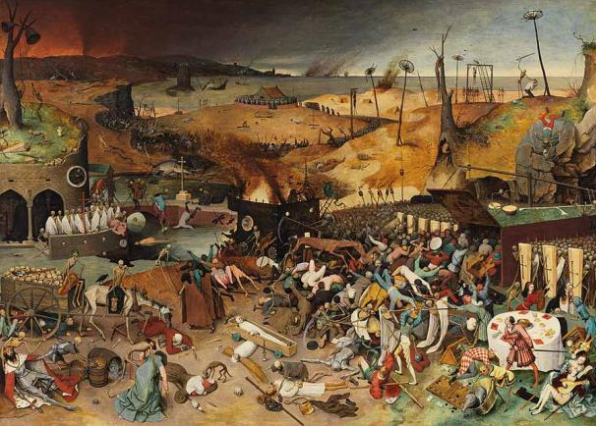
A set of significant climatic catastrophes that occurred between the years 535 and 536 are easily characterized as a worldwide disaster with disastrous outcomes. “The sun shined for roughly four hours every day, but even then, it was just a weak shadow. Everyone pronounced that the sun would
never again shine to its fullest extent,” explained Ephesus.
In reality, the decade of starvation and pestilence that started in A.D. 536 “may have been a partial reason for the fall of the Roman Empire,” according to Brandon Specktor in LiveScience. In actuality, the dip in temperature marked the start of the coldest decade in the previous 2,000 years.
Worldwide reports of starvation and crop failures were caused by these extremely low temperatures, which reached as low as 1.5 C during the summer. It was a terrible time to be living when the Justinian Plague struck a few years later, in 541 AD, killing up to 100 million people across the Mediterranean.
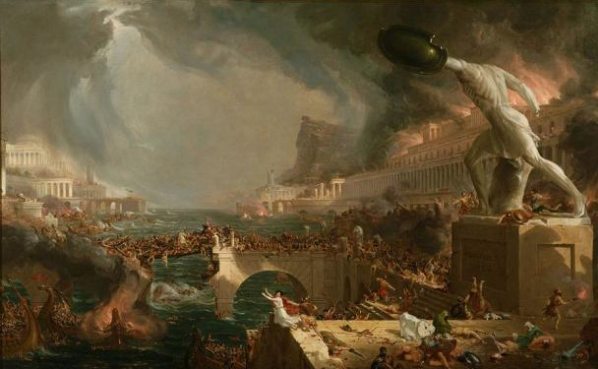
The Nightmarish and Harsh Winter of 536
Not just John of Ephesus writes of this climatic apocalypse. Procopius, a late antiquity Byzantine scholar and historian who lived from 500 to 565 AD, also mentions the sun’s peculiar behavior in 536 AD.
Procopius thought it was a dreadful omen of things to come and said, “And it came about during this year that a most dread portent took place.” Because the sun didn’t shine as brightly as the moon did for the entire year, it appeared to be in eclipse because the light it released was hazy.
Zacharias of Mytilene, a writer from the sixth century, also makes reference to the climate catastrophe of 536. In his chronicle, he mentions the “Dark Sun” that existed between 535 and 536 AD.
“From the 24th of March this year to the 24th of June the following year, the sun darkened during the day and the moon darkened during the night, and the water erupted violently with spray. Additionally, there was pain among men due to the terrible things because the winter was extremely harsh, to the point where birds perished from the vast and undeserved quantity of snow. Mytilene’s Zacharias (Chronicle, 9.19, 10.1)”
These three excerpts are but a sampler of many stories from throughout the globe that were written in the relevant era. The sun was said to be becoming weaker and losing its radiance in each instance. Its tint was also characterized by several as being bluish.
The moon was also used to observe the effects. It was just not as dazzling as it once was. The planet’s temperature decreased as a result of less light. According to Zacharias of Mytilene, a particularly long winter combined with a lack of rain caused agricultural failures and the extinction of birds and other creatures. Numerous regions experienced famine and pestilence, resulting in a significant death toll.
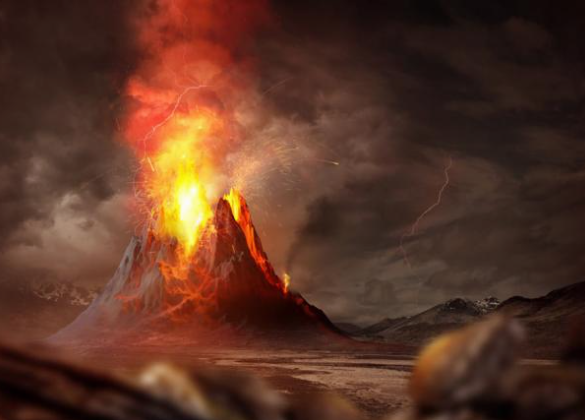
The tragedy was also well documented in China and Japan. There were severe droughts and deaths as a result of the lack of water. Thousands of square miles become uninhabitable. Eighty percent of the population in the province of Xi’an perished, and those who survived ate corpses to stay alive, according to the Beishi chronicles, the official chronicle of the Northern Dynasties. It was 536 years ago.
Australia, Europe, Africa, the Americas, and Korea were also affected by the disastrous occurrence. While not all nations have written histories, evidence of climatic changes was found in archeological and geological data. For example, research on tree trunks revealed that the year 536 AD had been the coldest in 1,500 years.
Seeking to Determine the Source of the Darkness
In all of this, the most crucial issue is: Why did it happen? The greatest year in history, 536, may have been caused by a massive asteroid or comet that struck the sea, although there are no conclusive answers for the climate catastrophe (if it had impacted land there would be evidence of a crater).
One supporter of this theory is the geologist Dallas Abbott, who based his theory on data he discovered while examining Greenland ice cores. But this wouldn’t account for the sun’s waning light, and no tsunamis—which would have happened if an asteroid had crashed in the ocean—have been observed during this time.
Another explanation that has been proposed is the possibility of a massive volcanic explosion, since the dust released into the atmosphere may have contributed to the fading of the light. Krakatoa, which is situated in Indonesia between the islands of Java and Sumatra, is one contender. Indeed, an old volcano is described in the 1869 Pustaka Raja Purwa, also known as the “Book of the Ancient Kings.”
The fact that this text was created in the 19th century may be the reason for errors in the time reference, even if it refers to the year 416 AD rather than 535 AD.
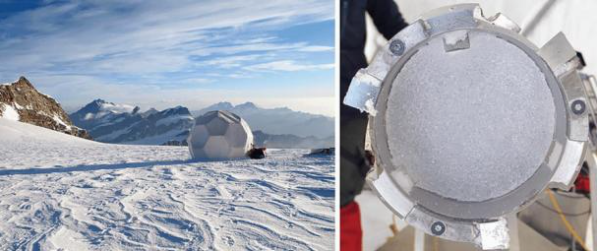
Searching for Solutions: Comprehending the Climate Disaster of 536
Although it’s uncertain if a conclusive solution will ever be discovered, experts are still searching for one. The fact that this global climate catastrophe is essentially unknown is one of its peculiarities.
Why aren’t schools teaching about this climatic event? Why isn’t it the subject of a ton of research studies? Maybe that’s because it serves as a constant reminder of our frailty as humans and the reality that, despite our advancements in power and sophistication, we are ultimately at the whim of the natural world.
Historians have long been aware of this climate catastrophe, but they are still baffled as to what caused it. Using a glacier in the Swiss Alps as a logbook of both naturally occurring and man-made events, scientists analyzed a 72-meter (253-foot) core of ice in 2018 and came to the conclusion that in 536, a massive volcanic explosion in Iceland spewed ash over the Northern Hemisphere. In 540 and 547, there were two additional eruptions. The journal Antiquity published their findings.
The Antiquity study claims that by 640, there are lead traces in the ice core, leading them to draw the conclusion that this is proof of a “silver-smelting boom.” According to Live Science, this silver rush is a surefire indicator of “a new merchant class prepared to trade in precious metals, and an economy rebounding in the darkness of starving, disease-stricken Europe.” After 536, humanity started to recover from the severe consequences of the harsh weather.
Top image: The year 536 was a climatic disaster. A scene from Caspar David Friedrich’s Winter. Source: Open access
